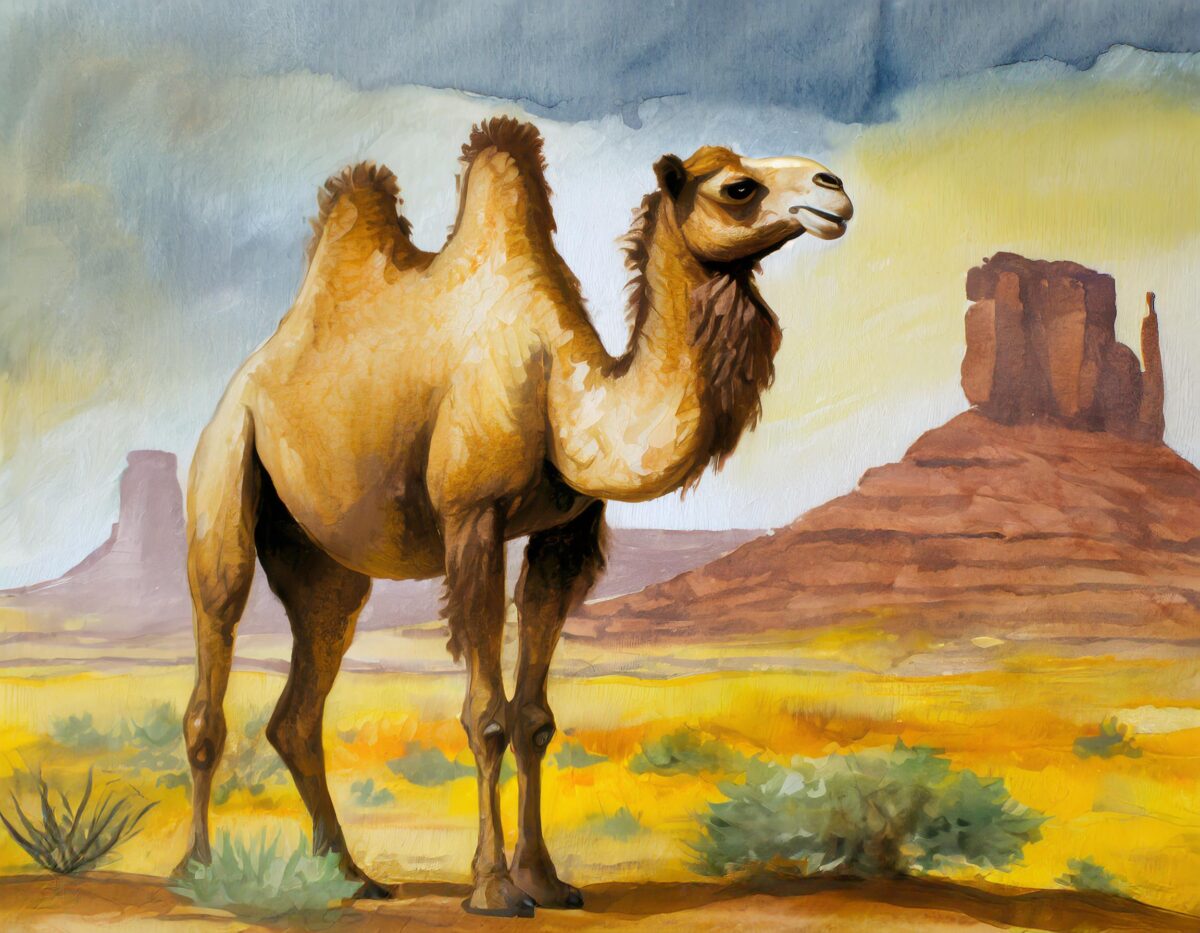Once upon a time in the West, there were camels. Introduced into government service 150 years ago during Lieutenant Edward Beale’s survey expedition from New Mexico Territory to California, these exotic humped ungulates demonstrated their usefulness, but the military—which could be muleheaded—soon lost interest in them. The grand but unsuccessful camel experiment in the Southwest, as historian Paul Andrew Hutton writes in this issue, was “an important part of a larger plan to consolidate the new territories won from Mexico and tie them to the eastern states.” A “camel express” experiment in 1860 was even more short-lived than the Pony Express, and the government sold its California camels in 1864. Fugitive camels, however, would roam (not quite like the deer and antelope, of course) in the southwestern desert for decades, becoming part of Western folklore.
As a kid I thought camels were cool, and not just because I grew up in a generation when men and women were willing to walk a mile for a Camel—that is, as long as their lungs held out. Heck, as late as 1997, the cigarette’s mascot, Joe Camel, was appearing so often that the next generation of kids could more easily recognize him than Mickey Mouse. Technically, the brand name should have been Dromedary. Yes, that’s a dromedary in front of the palm trees and pyramid on a Camel package. Every kid I ever knew has been confused on the hump issue. Well, here’s the scoop: The dromedary, or Arabian camel, has a single hump and is from the Middle East and North Africa, while the stockier, hardier, hairier Bactrian camel, native to the steppes of eastern Asia, has two humps.
Both varieties were brought to the States during the 1850s, although ancestors to today’s camels originated in North America 50 million years ago and crossed over from Alaska to Siberia 3 million years ago to settle in the “Old World.” At least one noted expert has suggested that camels be brought back to the New World. Unlike cattle and horses, these big browsers can eat mesquite and creosote bushes (to help control the shrub invasion of the Southwest), and, because they cannot eat grass, they would not bother anybody’s watered lawn. One wonders how Indian life might have differed through the centuries had the natives known camels as intimately as they did buffalo. In 1853 Secretary of War Jefferson Davis noted that Arabs, who utilized dromedaries, were not unlike the American Indians of the Southwest. Along with Buffalo Bill Cody, would a Western character have emerged named Camel Charlie Belen? Along with Minneconjou Sioux Chief Hump, would there have been a Southern Cheyenne chief named Two Humps?
The idea of camels in the West still sounds cool to me. I’ve read that there is a cross between a dromedary and a Bactrian camel that makes for a superior working camel (with one big hump, not three humps, Dr. Seuss fans). But any camels will do. No doubt I’ve been influenced by the fact that a camel makes an appearance in the opening of my favorite Western movie, Ride the High Country (a young cowboy mounted on a camel wins a race against cowboys riding horses), and in Episode 7 of my favorite Western television show, Maverick. In that episode, called “Relic of Fort Tejon” (yes, there really were camels at California’s Fort Tejon for a brief time), Bret Maverick (James Garner) wins an “Arabian mount” in a poker game, but the beast turns out to be a faithful female camel—with two humps, no less—named Fatima who can’t seem to live without him. Bret admits, “Trying to sell a camel was like trying to sell a herd of sheep to a cattleman.”





